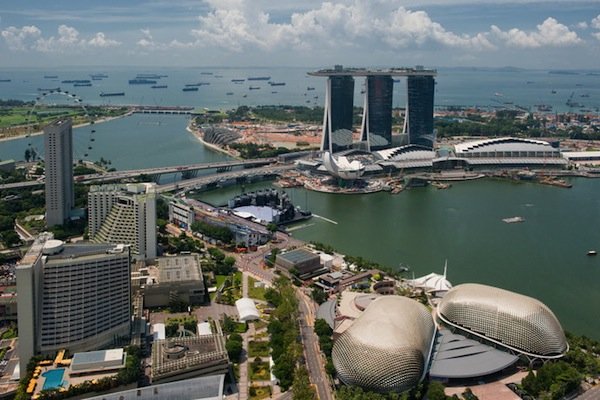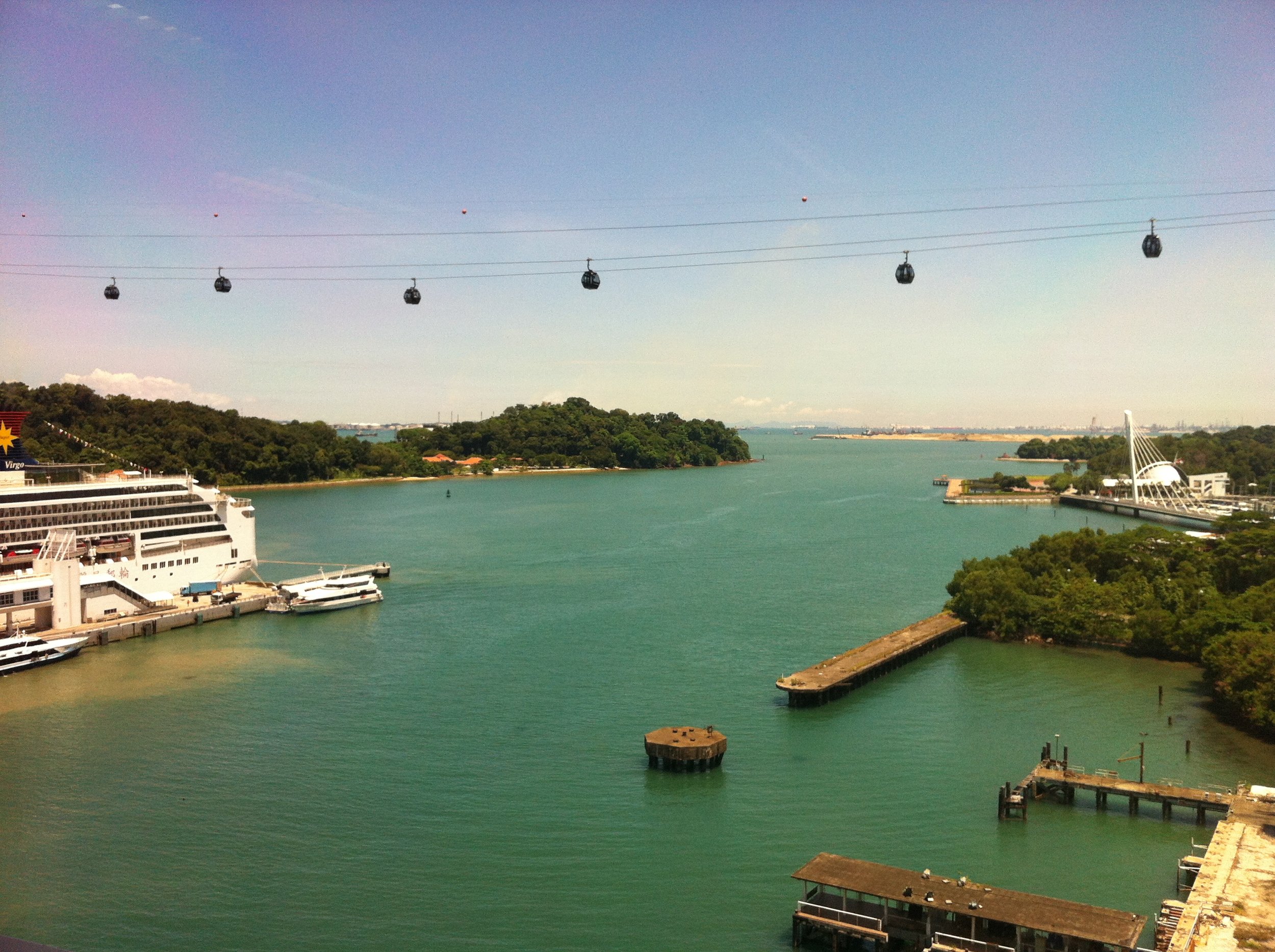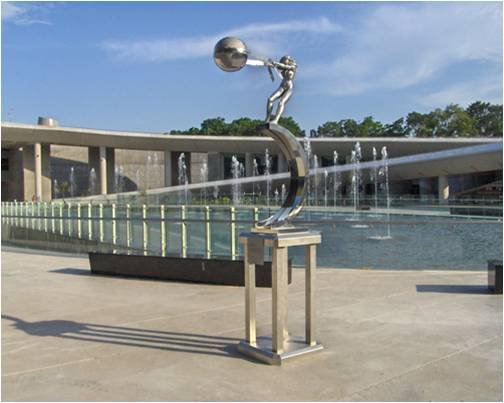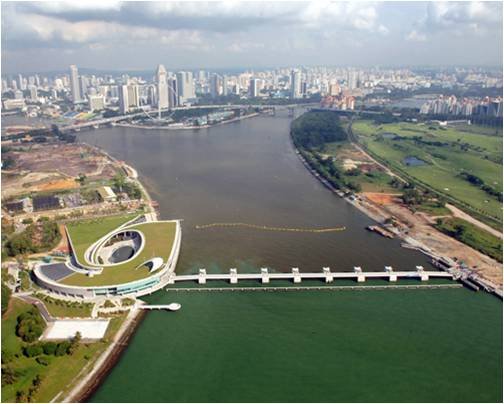Building a Sustainable Urban Future
In December 2014, the Singapore Economic Development Board partnered with The New Yorker magazine to publish another installment of its “Singapore Sessions” series. A complete transcript of the interview from which the published article was drawn follows:
Q: Do we accept that urbanisation is a necessary evil and all we can do is damage control?
I don’t accept the premise that urbanisation is an evil. I think it is absolutely necessary to economic development and improving the quality of life for growing populations. With respect to the urban infrastructure that we are involved with, we take a holistic view. We focus on water infrastructure, transportation, energy, waste management, building technologies, and urban ecology – all of the underlying structure and systems that are fundamental to a city’s health and prosperity. This underlying foundation of urban infrastructure is an essential contributor to a high quality of life and economic well being in a city.
The form of the city and the way in which we use land, water resources and energy has a great deal to do with the share of CO2 emissions attributable to cities. It is my belief that we can radically improve our performance with respect to all the infrastructure and do a great deal to reduce the green house gas emissions that come from urbanisation.
Long before we were aware of the impact of green house gas emissions and global warming, we struggled with issues of water and sanitation among rapidly urbanising populations. Frankly, if there’s one thing that can be done to improve the health and quality of life of a community it is to provide for sanitation and access to clean drinking water. That is the biggest leap forward a community can make.
We are dedicated to developing the tools and the understanding that will enable us to create significantly more efficient cities by approaching the planning of urban infrastructure in a different way. I am optimistic about our ability to come up with urban solutions that do a better job than we have done in the past.
We are developing new conceptual models of how we provide water, energy, and shelter more efficiently. There are many successful small-scale examples that show how we can radically improve the performance of the urban environment.
Q: What is green growth, and what is your vision of a future sustainable city?
When we use the term “green growth,” we are often talking about incorporating natural systems to do some of the work for us. Where in the past, we relied entirely on pipes or the electric grid, today we are also relying on vegetated swales to treat stormwater or wind turbines for energy. We are working on hybrid approaches to integrating landscape that performs valuable services. What serves as a park one day is designed to retain rainwater and treat it naturally during a storm event.
One of the other things that we are doing is “closing the loop” on the urban water cycle. What used to be separate systems designed to handle potable water, wastewater, and stormwater are now being viewed from an integrated perspective.
Since Roman times and before, cities have relied on rapid conveyance, piped systems to provide adequate water supply and convey urban drainage and waste products back to rivers and streams. These systems often put stress on the rural areas from which water is taken, as well as the receiving waters to which it is returned. So instead of taking this precious resource, using it once, and throwing it away, many cities are employing treatment technologies, at all scales, to recycle that water and use it again.
Singapore is a model for what can be done in this regard. Employing a combination of the latest technology integrated into natural “green” systems, a dense city like Singapore achieves water use efficiency that can handle increasing population, preserve public health, and create an environment that allows for economic development, education and a high quality of life. Singapore’s success convinces me that cities have the ability to meet the needs of growing populations if they put in place the physical infrastructure and governing institutions to build upon.
Q : What is the role of the Neysadurai Centre?
One of the challenges of having so many technology options, both green and traditional, is that they can be combined in so many different ways.
The traditional systems are well understood and accepted. But if we are going to combine the traditional approaches with some recycled water, or rainwater harvesting, or greywater systems the integration of these innovations can be difficult. Should we employ small-scale, large-scale, neighborhood-scale, building-scale solutions – or all of the above? We’ve got such a proliferation of new tools available to us, we need to be sure we a keeping up in our ability to efficiently integrate them into the built environment.
At the Neysadurai Centre, we are creating computer simulations of how various design alternatives are expected to perform. We take the plans of architects and engineers, translate them onto digital maps, incorporate different infrastructure solutions and technologies, and simulate how they will perform under expected conditions and use. These simulations keep track of hourly changes over periods on one year or more, comparing alternatives and searching for the most efficient solutions in a real world circumstances.
We want to develop the tools and the processes that will allow us to produce high-efficiency infrastructure solutions that save money, minimise green house gas emissions, and reduce waste – helping planners, architects and engineers design tomorrow’s cities.
Cities of the future will perform far more efficiently than they have in the past because we are integrating all this new technology, we are simulating how it performs, and we are finding approaches that will hopefully “leap frog” us forward in improving that the urban environment.
We see an interest in high-performing urban infrastructure almost everywhere, often driven by economics. There are developers who are excited about marketing products to both commercial and residential owners that have sustainability features built into them. There is a new ethic that is driving the migration of these approaches into cities all over the world. Many developers are really pushing the envelope and challenging themselves to see how small a “footprint” they can leave on the environment. We have the potential in dense urban environments like Singapore to house and provide for the health and well being of people with lower environmental consequences if we do it right. It’s not going to happen overnight because cities are organic. They are the result of a combination of economic forces, institutional forces, and everyday rules and regulations, like building codes, which shape their form and functions.
Q: How important is a public and private partnership?
The public sector and the private sector interact in cities all of the time. Ideally, public policies provide the incentives and the regulations to encourage the city to adapt to the future not simply replicate 19th century solutions. Almost everything seen in cities by way of infrastructure comes from 19th century models of how a city should work and what it should do.
Q: What are the differences between the urban environmental experience in Asia and that of the West? Would you agree that the sustainability issue was West-driven and now is Asia-driven? Why is this so?
Asia is where we’ve got to take on these challenges. Of course, 19th century paradigms were tremendously beneficial. The introduction of protected water supplies and water treatment in the 19th and early 20th centuries offered huge benefits to people who were dying of water-borne diseases like cholera. It is not that the systems we have don’t do great things for us, we should be as ambitious as our predecessors were in coming up with equally important, equally valuable breakthroughs that take advantage of new technologies and approaches.
One of the major differences between the West and Asia is the speed with which growth is occurring. The urgency is much greater and the scale of the infrastructure investment needed to keep up with it is also much greater. The scale and the pace of the growth in Asia is unprecedented.
Q: What advice would you give to planners of Asian cities?
I would encourage planners to have very high aspirations and challenge themselves to significantly improve the performance of the built environment in cities. There are always two paths. One is to do things the way they have always been done. In most cities, that’s the easiest way to go. Cities employ complex governance structures that have many responsible agencies providing needed approvals. If we take the conventional path, however, it likely will produce yesterday’s results.
The other path requires the courage to work with stakeholders on new design goals, taking advantage of the knowledge, the technologies, and the new approaches that are developing. Over time, if some communities have the courage to demonstrate real success with new solutions change will come. And I am not saying break the rules, instead develop new rules. And planners are one of the forces out there who can facilitate the process of creating tomorrow’s rules.
Q: Any other thoughts?
A city is a complex group of interests. When you get a group of people in a room from all different walks of life, all ages, backgrounds, occupations and incomes, of course it can be contentious. But I have generally found that when you ask people what they want from a city, what their goals are, they almost always share the same values. People want security, jobs, affordable housing, educational opportunities, mobility, safe water, open space, and a clean environment. What people expect of a livable city is generally quite similar. So what are people arguing about? They are typically arguing about how to do it. How do we accomplish it? Today we are more willing to accommodate the multiple interests of the citizens of the city, and we have more tools to accomplish that. I’ve been in a lot of contentious meetings as a planner of trying to reach consensus about what to do. They have usually ended peacefully because people’s goals are the same.
Finally, It is extremely important that planners have the benefit of overall good governance. The implementation of a plan, no matter how good it is, depends on good governance in the city where you work. And that’s been another aspect of Singapore that has made it a delightful place to work – not because people don’t have conflicts but because they are resolved in a transparent manner that is based on good public policy.
By definition, rapid urbanisation is always accompanied by significant investments. What we should think about is proving that there are better solutions for designing the built environment, while providing the institutional and economic incentives that steer cities towards those better outcomes.
Singapore Sessions is a trademark by Singapore Economic Development Board





